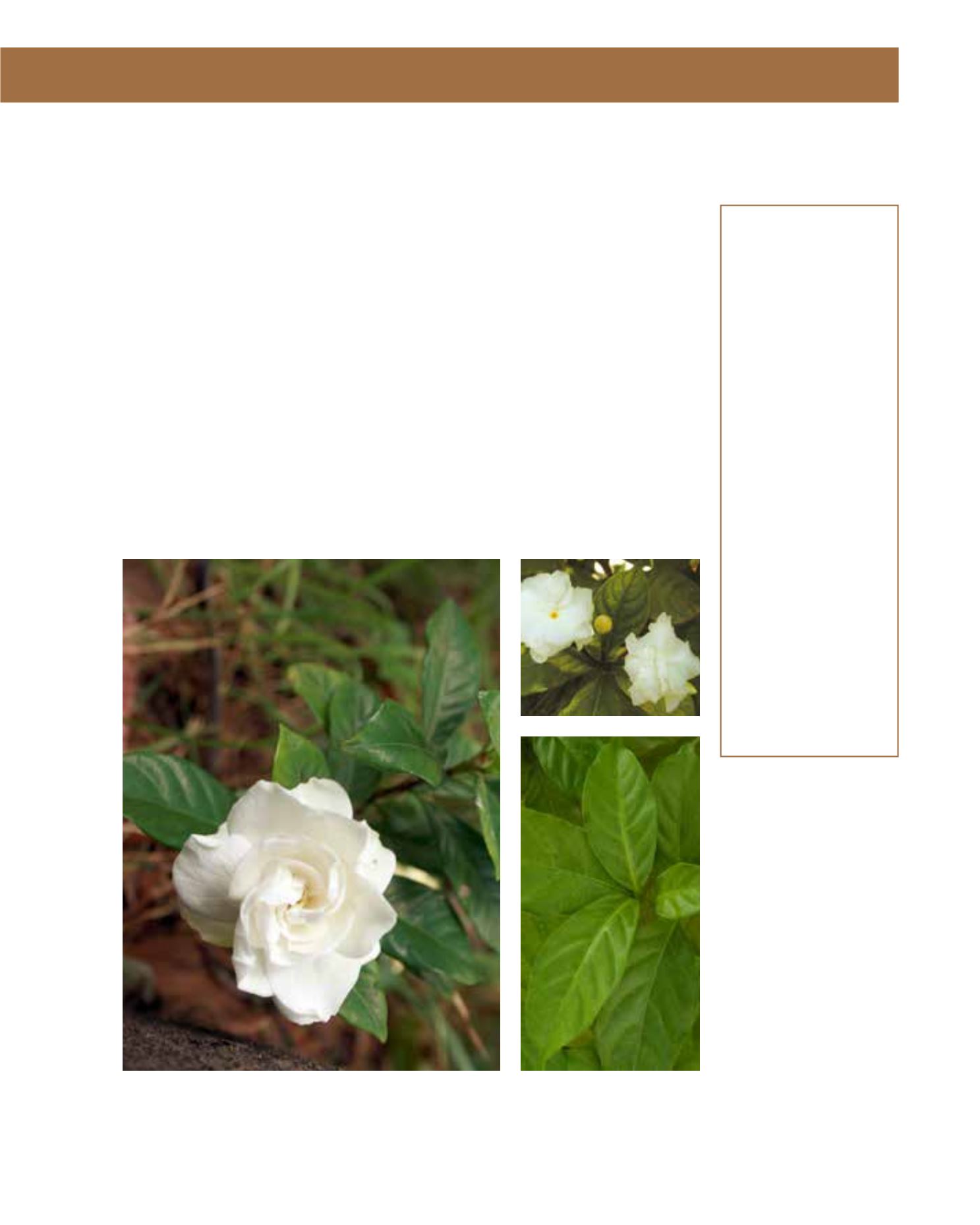

GENERAL
Origin
:
sub-tropical,
tropical
Vigour
:
slow-growing
Humidity
:
semi-humid, very
humid, extremely
humid
Propagation :
cuttings
Maintenance :
moderate
CONDITIONS
Urban climate :
vulnerable
Dessication :
vulnerable
Stagnant water :
vulnerable
Irrigation
:
high
Salinity/ppm :
low (1000 ppm)
Hardiness
:
-6°C
SHAPE
Type
:
shrub
Height
:
0.3 m-1.5 m
Spread
:
0.5 m-1.8 m
Foliage
:
evergreen
FLOWER
Colour
:
white
Size
:
8 cm
Period
:
May - August
Smell
:
scented, strong,
gives freely of
its scent, flower,
sweet, fruity
FRUIT
Type of fruit :
berry
Fruit size
:
4 cm
In subtropical China, one may find the Gardenia or Cape Jasmine growing wild to a shrub of
about 1.5 metres in height and a little more in width. Its shiny, evergreen foliage is very attractive
and measures some 10 cm in length. The magnificently scented flowers appear in spring. Their
ivory petals contrast well with the dark-green leaves. Cultivars often show double flowers and even
variegated foliage. Berries contain seeds that are embedded in an orange pulp. Established plants
withstand full sun if the water supply is excellent. They generally do better with some afternoon
shade without reducing the floral splendour. If planted in the ground, the soil must be enriched
with peat or compost. As heavy feeders, they should receive frequent fertilisation in early spring,
early summer and early autumn with an acid type. Irrigation must be regular and thorough, with
the lowest possible salt content. Gardenias are prone to overwatering, both in poor-draining soil
and in containers. Apart from this sensitivity, they do well in pots and troughs, since they grow
quite slowly to become a dense bush and are not harmed if they become rootbound. Pruning
can be done in autumn, but is rarely necessary to shape these compact bushes. Gardenias are
also susceptible to a black mould which forms on the leaves, as well as nematodes, but the plants’
beauty is worth the effort to replace infested soil. G. augusta is an ideal shrub only for a small-
sized garden without exposure to full sun or strong winds. It is not always successful in Arriyadh.
154
Gardenia augusta,
Rubiaceae
Gardenia,
Cape Jasmine
















